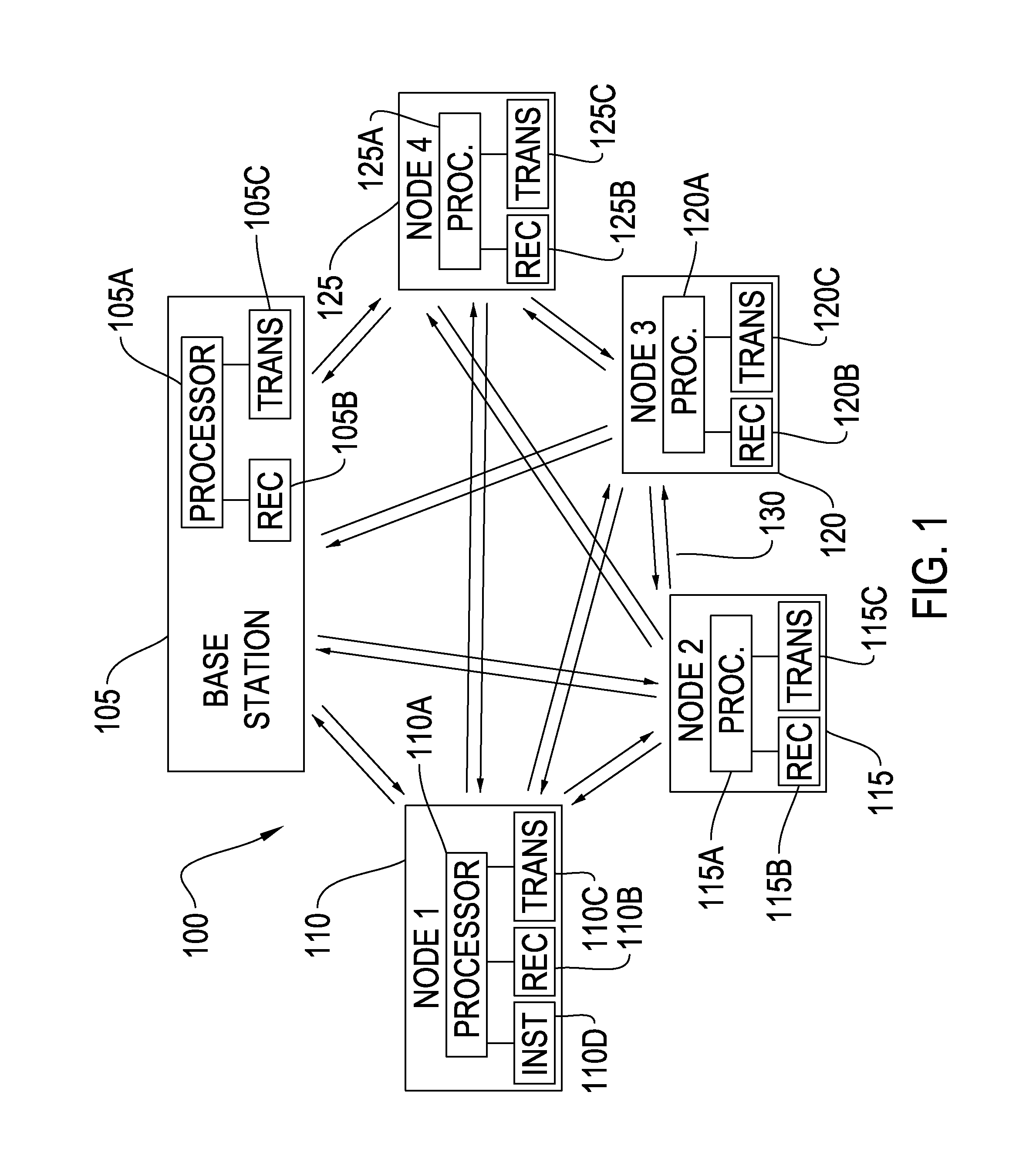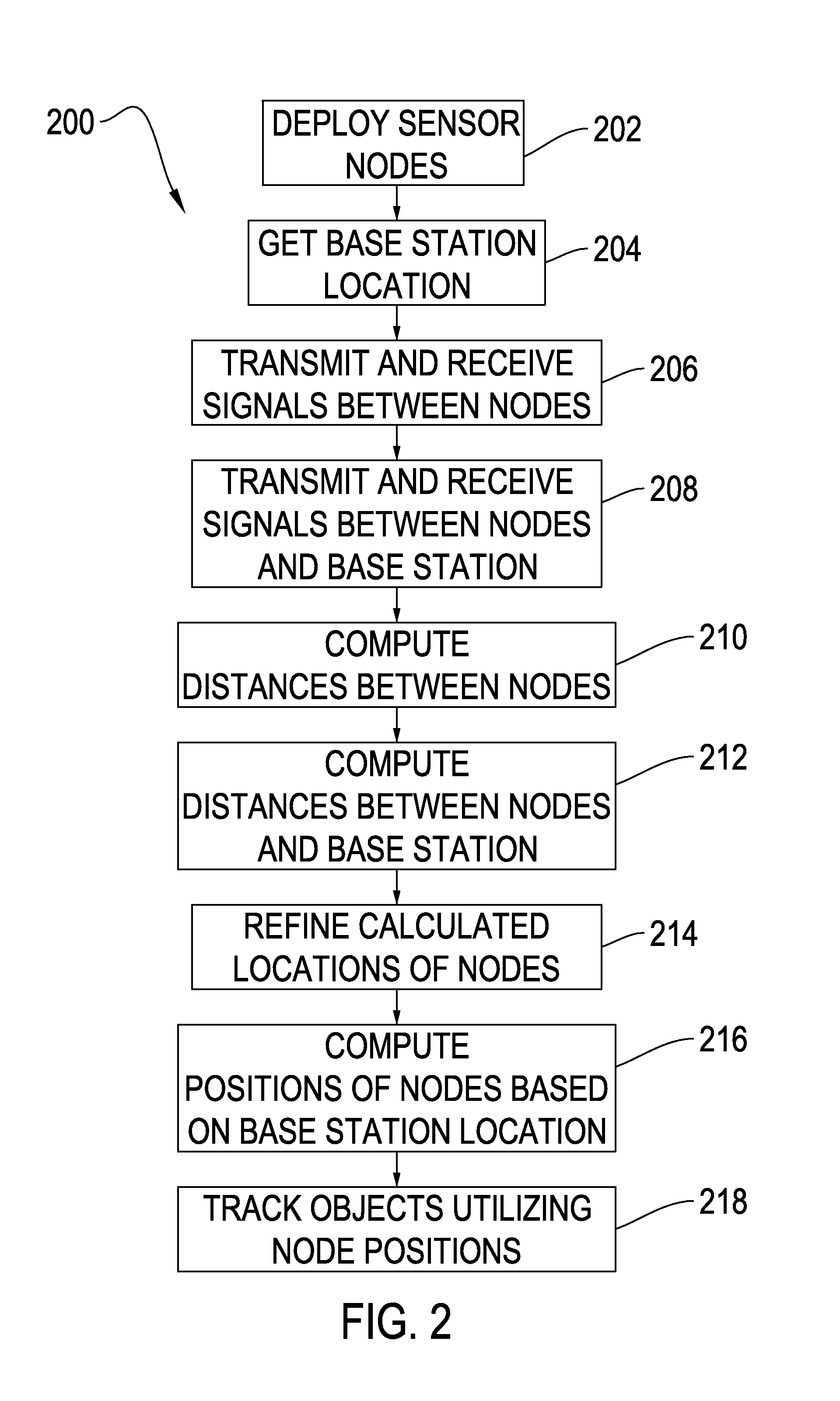Self surveying portable sensor nodes
a portable sensor and self-surveying technology, applied in the field of self-surveying portable sensor nodes, can solve the problems of high logistical cost and time, above-mentioned methods of establishing a range, and achieve the effect of minimal outside interaction
- Summary
- Abstract
- Description
- Claims
- Application Information
AI Technical Summary
Benefits of technology
Problems solved by technology
Method used
Image
Examples
Embodiment Construction
[0017]The following detailed description is of the best currently contemplated modes of carrying out the invention. The description is not to be taken in a limiting sense, but is made merely for the purpose of illustrating the general principles of the invention.
[0018]FIG. 1 is a block diagram of a self-surveying range system 100 including a base station 105, a first sensor node 110, a second sensor node 115, a third sensor node 120, and a fourth sensor node 125. The base station 105 can be located on a vessel, a structure or an aircraft, for example. Preferably, base station 105 can establish its global coordinates by way of a global positioning system (GPS) or some other means. Base station has an associated processor 105A joined to a receiver 105B and a transmitter 105C. Likewise, each of the sensor nodes 110, 115, 120, and 125 has an associated processor 110A, 115A, 120A and 125A, an associated receiver 110B, 115B, 120B and 125B, and a transmitter 110C, 115C, 120C and 125C. At l...
PUM
 Login to View More
Login to View More Abstract
Description
Claims
Application Information
 Login to View More
Login to View More - R&D
- Intellectual Property
- Life Sciences
- Materials
- Tech Scout
- Unparalleled Data Quality
- Higher Quality Content
- 60% Fewer Hallucinations
Browse by: Latest US Patents, China's latest patents, Technical Efficacy Thesaurus, Application Domain, Technology Topic, Popular Technical Reports.
© 2025 PatSnap. All rights reserved.Legal|Privacy policy|Modern Slavery Act Transparency Statement|Sitemap|About US| Contact US: help@patsnap.com



